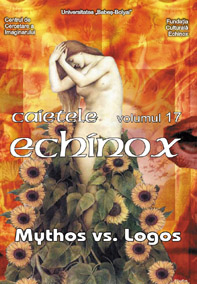Goethe, réflexions sur une épistémologie alternative. Forme, image et vision
Goethe: an Alternative Epistemology. Shape, Image and Vision
Author(s): Jean-Jacques WunenburgerSubject(s): Literary Texts
Published by: Universitatea Babeş-Bolyai
Keywords: Goethe; Natural Sciences; Epistemology; Gestalt; Image; Vision.
Summary/Abstract: Goethe’s eclectic contribution to the natural sciences may seem outdated today, a product of its time. Goethe’s obsession for natural types (typos), the effort he invested in his theory of colors, all seem to emanate from a profoundly inquiring spirit, but also seem to lack the exactness usually associated with scientific research. What Goethe was trying to achieve through his research was in fact as distinct as it was against the current: the building of an alternative epistemology, equally (maybe even predominantly) intuitive as it was conceptual, the kind of epistemology that would unite the sensorial and the intellectual. His main tool for founding this science of perception was the concept of “form” (Gestalt), which for Goethe meant that the internal structure of any object or being that makes it instantly recognizable as individuality and as a part of a whole. Hence, all the apparently disparate efforts to describe typologies were steps in the greater purpose of defining the form, not only as a distinctive concept, but as an effort to bridge the gap between rationalism and sense-based philosophies. Thus, form becomes a third, synthetic, more eclectic way to express the manner in which external reality is perceived.
Journal: Caietele Echinox
- Issue Year: 2009
- Issue No: 17
- Page Range: 74-82
- Page Count: 9
- Language: French
- Content File-PDF

